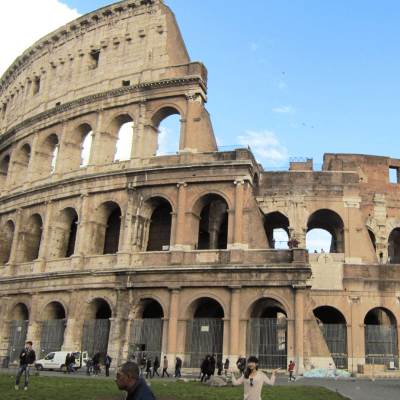Turning a body into ashes using heat has a long and fascinating history. This is known as cremation. Cremation extends back thousands of years and has undergone substantial development even though it is considered a more contemporary alternative for disposition. We’ll look at the history of cremation and its spiritual and cultural importance. How did it become a frequently used way to pay respect to the deceased? We also have an article on modern cremation and cremation chambers.
History of Cremation – the Ancients
We can trace the roots of cremation back to ancient civilizations. Various cultures practiced burning the deceased as a method of handling the deceased’s remains.
One of the earliest known instances of cremation dates to the Stone Age when natural fire sources cremated bodies. These fires would consume the bodies, leaving behind ashes and bone fragments.
After the Stone Age, the ancient Greeks were a major influence on the adoption of cremation as a funeral custom. They thought that cremation was a cleansing process. It allowed the soul to depart on its trip to the afterlife by releasing it from the physical body. Cremation was viewed by the ancient Greeks as a means of freeing the soul’s energy from the physical body and of spiritual purification.
The Romans and Cremation
The ancient Romans also adopted cremation as a standard funeral practice, although their motivations differed from those of the Greeks. The Romans primarily practiced cremation due to practicality and space constraints. With an expanding population, cremation provided a more efficient means of disposal for the deceased, enabling more sustainable use of land resources.
The Romans also recognized the practical benefits of cremation in terms of hygiene and disease control. Burning the deceased eliminated the potential spread of diseases from burying the bodies in the ground. Furthermore, cremation facilitated the repatriation of remains. Soldiers and citizens who died away from their homeland could have their ashes transported for burial or commemoration.
Various Cultures Practiced Cremation
For a many reasons, including religious, cultural, practical, and geographic factors, different societies and civilizations have practiced cremation throughout history. Cremation has certainly changed however since the time of the Greeks and Romans, who had particular beliefs and goals for their rituals. Across various times and cultures, it is still done in various ways and with varying significance.
Cultural and Religious Meanings for Cremation
Throughout history, cremation has had a variety of meanings. In both Hinduism and Buddhisn is is favored. In contrast, faiths like Christianity, Islam, and Judaism have favored burial as a way to respect the dead.
Cremation Resistance in the Western world
Cremation encountered resistance in the Western world, particularly during the rise of Christianity, which strongly emphasized burial as a symbol of bodily resurrection. The Christian belief in the resurrection led to a preference for burial. Burial was viewed as a way to preserve the physical remains for future resurrection and eternal life. Consequently, cremation was often associated with pagan practices and viewed with suspicion by the early Christian Church.
As societal norms began to shift in the late 19th century, cremation gained acceptance as an alternative to burial. This change influenced various factors, including practical considerations, evolving religious attitudes, and emerging philosophical movements.
Modern crematories
In 1876, Milan, Italy, built the first contemporary crematorium. This represented a crucial turning point in the acceptance of cremation. The facility provided a controlled environment for the cremation process, ensuring proper handling of remains and addressing concerns regarding hygiene and public health.
Following the establishment of the Milan crematorium, cremation societies started to form in Europe and North America. These societies advocated for cremation; they emphasized its benefits, such as cost-effectiveness, conservation of land, and simplicity, compared to traditional burial methods. They sought to educate the public about cremation and campaigned to establish crematoria in different regions.
Changing Attitudes toward crematories
Attitudes in society around dying and grief were changing at this time as well. Funeral customs changed as a result of the Industrial Revolution, urbanization, and shifting cultural norms. The rising concepts of efficiency, independence, and a break from customary rites were all in line with cremation.
Additionally, the Enlightenment and the advent of secularism as philosophical movements contributed to the acceptability of cremation. These movements pushed for rationalism, advancement in science, and a stress on personal autonomy and independence. These concepts were supported by cremation, which broke with established religious customs. People looking for a change from conventional religious ceremonies found it appealing.
Cremation continues to become more and more common as the 20th century went on. The acceptance of cremation as a funeral practice was further accelerated by changes in legislation and technological advancements. The efficiency and control of the cremation process were improved by these advancements, which also helped cremation become more widely accepted as a viable alternative to traditional burial.
History of Retort Cremation
One pivotal advancement in cremation technology was the introduction of retort cremation. Retort cremation, or combustion or cremation by a furnace, replaced the traditional open-air pyre method. It involved using a specially designed furnace to provide a more controlled and efficient environment for the cremation process. The retort cremation method enabled the complete and thorough incineration of the deceased’s remains, resulting in a more reliable and consistent outcome.
The creation of gas-powered cremation chambers in the middle of the 20th century significantly improved the cremation process. Gas-powered cremation chambers allowed for precise temperature control, faster cremation and greater energy economy. These chambers utilized natural gas or propane as fuel sources, providing a reliable and consistent heat supply for the cremation process. The introduction of gas-powered cremation chambers improved the overall cremation experience for families. It also contributed to the broader acceptance of cremation by funeral homes and crematoria.
Changing Laws Around Cremation
Changes in legislation also played a crucial role in the acceptance and regulation of cremation.
As cremation gained popularity, governments began enacting laws and regulations to ensure proper oversight and standards for cremation facilities. Today facilities are highly regulated and inspected.
These laws covered aspects such as the construction and operation of crematoria, handling of remains, environmental considerations, and the rights of families in choosing cremation. Establishing legal frameworks helped build confidence in cremation as a regulated and dignified practice, addressing concerns related to public health, environmental impact, and ethical considerations. Furthermore, advancements in cremation technology and changes in legislation facilitated the establishment of cremation societies and associations. These organizations focused on promoting the benefits of cremation, educating the public about the process, and advocating for the rights of individuals who preferred cremation.
By exposing misunderstandings, they were crucial in influencing public opinion. For those who are thinking about choosing cremation, these organizations offer services and assistance. Overall, the efficiency, control, and cremation procedure have all been greatly enhanced by technological developments, particularly the introduction of retort cremation and gas-powered cremation chambers. These developments, when combined with new legistation, were crucial in promoting cremation’s acceptance and normalization as a preferred method of end-of-life disposition.
History of Cremation and Evolution Summation
The development of cremation is complex and changing dynamics that exist between culture, religion, and societal standards. Cremation has evolved from its ancient roots to modern technological breakthroughs to become a frequently used and affordable technique of disposition.
Innovations that address the sustainability of cremation procedures keep developing as environmental concerns spread. Understanding the rich history of cremation allows us to appreciate the cremation options we have today.




